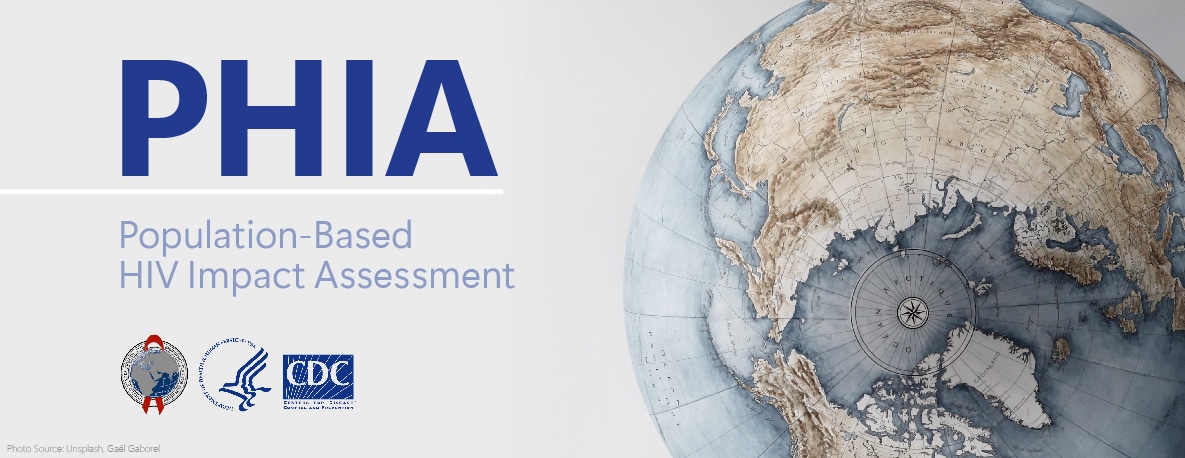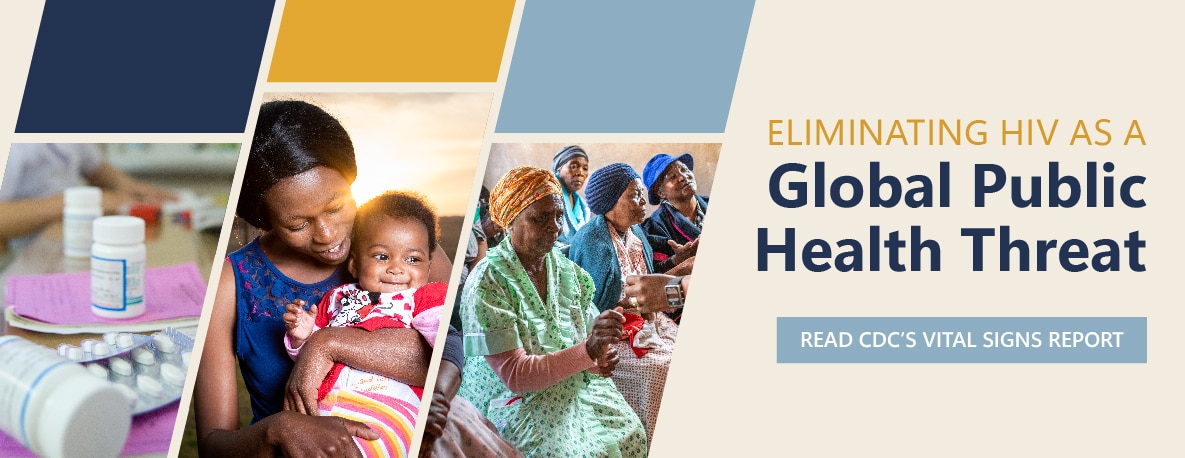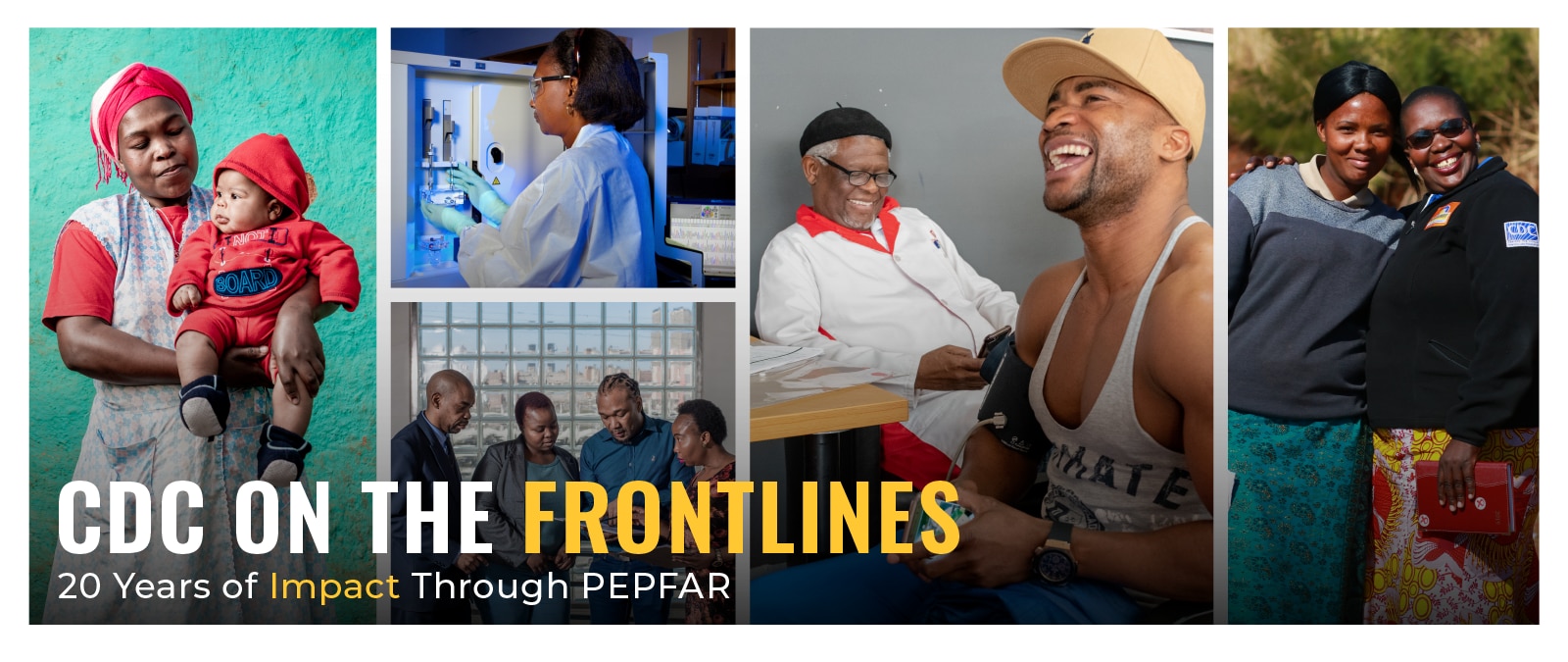Cambodia Country Profile

Cambodia Country Profile
Discover more about CDC’s work in Cambodia by viewing our detailed country profile
Country Overview
CDC works with the Government of Cambodia—a global leader in the fight against HIV—to achieve sustained elimination of new HIV infections. CDC’s collaborative work is focused in four areas: finding undiagnosed HIV cases; assuring quality across the HIV treatment and support cascade; strengthening surveillance and routine monitoring systems; and supporting Cambodia’s active case management program. CDC also works with Cambodia to strengthen programmatic decision-making and national HIV/AIDS program performance through innovative approaches to data management at the district, provincial, and national levels.
Per Capita GNI
$1,700
(2022)
Population (million)
16.76
(2022)
Under 5 Mortality
24.8/1,000 Live Births
(2021)
Life Expectancy
69.6 Years
(2021)
Estimated HIV Prevalence
0.5%
(Ages 15-49): (2022)
Estimated AIDS Deaths
1,100
(2022)
TB Treatment Success Rate
96%
(2020)
Estimated TB Incidence
288/100,000
(2021)
Estimated Orphans Due to AIDS
30,000
(2022)
TB patients with known HIV-status who are HIV-positive
1.7%
(2021)
Reported Number Receiving Antiretroviral Therapy (ART)
63,769
(2022)
Strategic Focus
The Government of Cambodia is a global leader in the fight against HIV. It has cut adult infection rates in the general population by more than half in the past 15 years and as of December 2016 has been providing HIV treatment to over 95% of diagnosed people living with AIDS. The goal of the Centers for Disease Control and Prevention’s (CDC) U.S. President’s Emergency Plan For AIDS Relief (PEPFAR) work is to assist Cambodia to achieve sustained elimination of new HIV infections by 2025 by collaborating in these four areas:
1) Finding undiagnosed HIV cases: applying cutting-edge risk elicitation techniques to find new HIV positives more effectively and implementing provider initiated testing, contact tracing, and partner notification
2) Assuring quality across the HIV cascade: introducing innovative treatment support strategies such as multi-month scripting, same day Antiretroviral treatment (ART) initiation, and other service efficiencies, and laboratory strengthening
3) Strengthening surveillance and routine monitoring systems: improving how systems find, describe and follow HIV positive patients through the treatment cascade
4) Boosted integrated active case management (B-IACM): supporting Cambodia’s active case management program that follows individuals through the HIV cascade from the first reactive test to receiving treatment.
Key Activities and Accomplishments
• Identifying HIV Risks through a Case Control Study: In 2018, CDC is supporting the Cambodian Ministry of Health’s National Center for HIV, Dermatology and STIs (NCHADS) and National Institute of Public Health (NIPH) to conduct a HIV case control study. Through use of the new HIV recency test and risk elicitation techniques, the findings of this study will help the HIV program define the current and historical risk profiles of people living with HIV. This will allow intervention decision-making to better target high-risk groups.
• Improving the Quality of HIV Testing: In 2017 and 2018, CDC is supporting NCHADS to scale up external quality assurance (EQA) for point-of-care rapid HIV diagnostic testing to an additional 12 health centers in two provinces. This follows a successful pilot of the program at 28 health centers in 2015 and 2016. CDC also worked with NCHADS to develop a national Standard Operating Procedure (SOP) on Quality Assurance for HIV Testing and Counseling and led on-the-job training for front-line staff on using the SOP.
• Using Innovative HIV Treatment Methods and Improving Quality of Treatment: To improve the quality of ART therapy in Cambodia, CDC will partner with NCHADS to pilot same-day ART initiation and multi-month ART spacing for stable patients. Results from both of these pilots will be used to create national guidelines. Since 2014, CDC has partnered with NCHADS to implement an intensive Continuous Quality Improvement (CQI) program in four provinces. This involves quarterly meetings of staff at the national, provincial, and site-levels for an interactive review of data to improve quality of treatment.
• Increasing Viral Load Suppression Rates: In 2017, CDC added an HIV viral load testing platform in Siem Reap province, in addition to the existing platform in Phnom Penh. CDC is working with NCHADS to reduce the time from sample collection to clinicians and patients receiving viral load test results. CDC is also assisting NCHADS implement a nationwide intervention to improve patient adherence to HIV treatment.
• Improving Programs through Automated Dashboards: CDC has worked with the Data Management Unit of NCHADS to develop district, provincial and national level HIV/AIDS program dashboards. The dashboards allow program managers to identify major issues quickly and take appropriate corrective actions. This will strengthen programmatic decision-making and national HIV/AIDS program performance.

Tracking PEPFAR Impact Toward Global Targets
The U.S. Centers for Disease Control and Prevention (CDC) works with partners including host countries, local implementing partners, faith-based organizations, and other community-based organizations to measure progress towards HIV epidemic control in countries supported by the U.S. President’s Emergency Plan for AIDS Relief (PEPFAR).

Vital Signs: Global HIV Communications Toolkit
In 2003, the U.S. President’s Emergency Plan for AIDS Relief, or PEPFAR, was announced. When it was launched, PEPFAR became the largest commitment by any nation to address a single disease in history. At the time, HIV was a global crisis, devastating families, communities, and economies worldwide—particularly in sub-Saharan African countries.

CDC On the Frontlines
Over the past 20 years, the U.S. President’s Emergency Plan for AIDS Relief (PEPFAR) has saved millions of lives as a leader in the global response to two of the world’s deadliest infectious diseases – HIV and TB. As a key implementing agency of the U.S. President’s Emergency Plan for AIDS Relief (PEPFAR), CDC is at the forefront of these global efforts to treat and prevent these diseases.